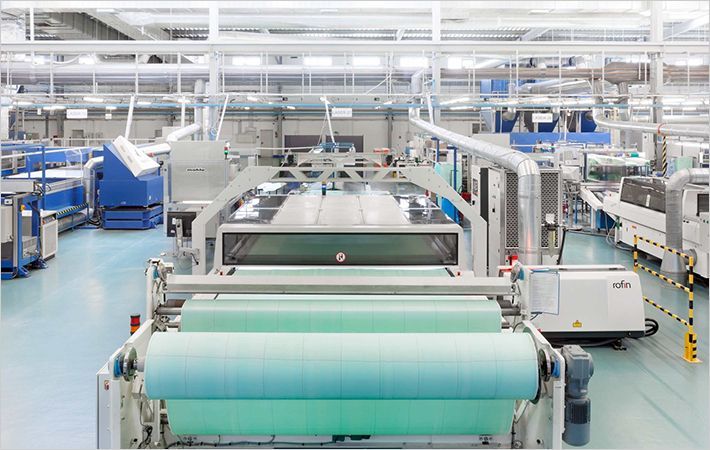Scientists from IBM Research have successfully discovered a new class of polymer materials that can potentially transform manufacturing and fabrication in the fields of transportation, aerospace, and microelectronics.
Scientists from IBM Research have successfully discovered a new class of polymer materials that can potentially transform manufacturing and #
Through the unique approach of combining high performance computing with synthetic polymer chemistry, these new materials are the first to demonstrate resistance to cracking, strength higher than bone, the ability to reform to their original shape (self-heal), all while being completely recyclable back to their starting material.
Scientists from IBM Research have successfully discovered a new class of polymer materials that can potentially transform manufacturing and #
Also, these materials can be transformed into new polymer structures to further bolster their strength by 50% - making them ultra strong and lightweight. This research was published today in the peer-reviewed journal, Science, with collaborators including UC Berkeley, Eindhoven University of Technology and King Abdulaziz City for Science and Technology (KACST), Saudi Arabia.
Scientists from IBM Research have successfully discovered a new class of polymer materials that can potentially transform manufacturing and #
Polymers, a long chain of molecules that are connected through chemical bonds, are an indispensable part of everyday life. They are a core material in common items ranging from clothing and drink bottles (polyesters), paints (polyacrylics), plastic milk bottles (polyethylene), secure food packaging (polyolefins, polystyrene) to major parts of cars and planes (epoxies, polyamides and polyimides). They are also essential components in virtually every emerging advanced technology dating back to the industrial revolution – the steam engine, the space ship, the computer, the mobile phone.
Scientists from IBM Research have successfully discovered a new class of polymer materials that can potentially transform manufacturing and #
However, today's polymer materials are limited in some ways. In transportation and aerospace, structural components or composites are exposed to many environmental factors (de-icing of planes, exposure to fuels, cleaning products, etc.) and exhibit poor environmental stress crack resistance (i.e., catastrophic failure upon exposure to a solvent). Also, these polymers are difficult to recycle because they cannot be remolded or reworked once cured or thermally decomposed by heating to high temperatures. As a result, these end up in the landfill together with toxins such as plasticizers, fillers, and color additives which are not biodegradable.
Scientists from IBM Research have successfully discovered a new class of polymer materials that can potentially transform manufacturing and #
IBM's discovery of a new family of materials with a range of tunable and desirable properties provides a new opportunity for exploratory research and applications development to academia, materials manufacturers and end users of high performance materials.
Scientists from IBM Research have successfully discovered a new class of polymer materials that can potentially transform manufacturing and #
Two new related classes of materials have been discovered which possess a very distinctive range of properties that include high stiffness, solvent resistance, the ability to heal themselves once a crack is introduced and to be used as a resin for filled composite materials to further bolster their strength.

